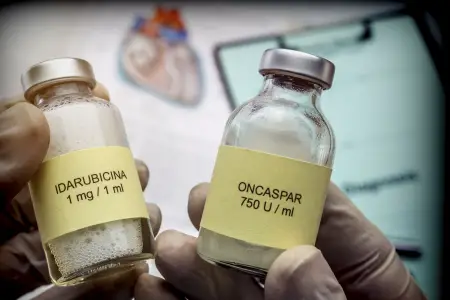CBR Cord Blood Research: No Science Fiction…….Reality
CBR Cord Blood Research: Recent Advances
CBR Cord Blood (Cord Blood Registry) is a private company that provides the facilities for cord blood banking and also supports research in this area. This is not a review of CBR Cord Blood: the review for CBR Cord Blood is in this article following this link and the comparison with other cord blood banking institutions is instead, here.
Usage of cord blood to treat various disease conditions is expanding at a fast pace; there is continuous research going on in the area, with each year many newer uses reported. Investing in cord blood storage is an investment in the future. It is expected that soon these potent cells would be able to heal any disease and trauma. It now seems entirely practicable that humans would be able to grow and repair most organs.
For a review of CBR Cord Blood we have this article. Here, instead, this article is related to the CBR Cord Blood research activities, and we respond to some comments in the forum area about research performed by CBR Cord Blood apart from the ones in the review. Some of the following activities are also done by other banks included in our cord blood banking reviews.
What Does CBR Cord Blood Do?
It is primarily a cord blood bank, an organization that is responsible for pre-processing of cord blood, and then safely storing it for long-term usage. Choosing a right organization for cord blood is vital, as neither the storing of cord blood is that simple as it may sound, nor its expansion for clinical use. Saving the cord blood will be of no use if a person learns at a later date (maybe after a decade or two) that the stored cells are not viable or expandable.
CBR Cord Blood Research Specialities
No doubt that cord blood is not stored for the red blood cells, instead, for some very special cells that can work as seed cells for just any other type of body cells. Cord blood is stored for these primitive cells with amazing capabilities. Researchers are still discovering newer and more interesting cell types in the cord blood, which only further underlines its value in medicine. CBR Cord Blood is funding many of these research activities.
At present, two cell types are well recognized in the cord blood (there are studies done by CBR Cord Blood). They are hematopoietic stem cells and mesenchymal stem cells. Hematopoietic stem cells were first identified in the bone marrow, and thus they are also called bone marrow cells, while mesenchymal cells were identified much later and therefore are often called “other bone marrow cells.”
Since these fantastic stem cells with the ability to differentiate into various other cells were first identified in the bone marrow, thus the bone marrow transplant at the end of the 1960s could be regarded as the beginning of cell therapy. Though researchers still have to wait for few decades, when they could identify other, safer, non-invasive sources of stem cell. With time they learned to multiply them in lab conditions and even discovered various compounds that could stimulate their growth into one or another type of body tissues. Research into the stem cell therapy, activity performed by CBR Cord Blood, is regarded as one of the most perspective branches of medicine that promise to revolutionize the way we treat diseases in coming decades.

CBR Cord Blood Research: What Are The Hematopoietic Cells?
These cell types are in abundance in bone marrow and cord blood, thus no surprise that they have been well researched. These cells can give rise to just any kind of blood cells through the process known as hematopoiesis. In bone marrow, these cells produce more than 500 billion various blood cells a day. Thus if anything goes wrong with the bone marrow, there is severe anemia, fall in immunity and so on. Hematopoietic cells are typically used to treat various diseases of the blood and immune system. They are also used to treat different types of cancers (especially blood cancers) and here also we see that for CBR Cord Blood is a field of investigation.
CBR Cord Blood Research: What Are Mesenchymal Cells?
These so-called another type of bone marrow cells were discovered later, and are now subject to even more research in comparison to hematopoietic cells. These cells can easily divide and mature into adipocytes (fat cells), chondrocytes (cartilage), and osteocytes (bone cells). These type of cells have received lots of attention these days, as it has been discovered that they can differentiate into even more kind of tissues. Thus in recent times, it has been found that they may also be used to grow or regrow skeletal muscles, heart muscles, blood vessels, liver cells, and even brain cell. Thus they have much broader applications.
It must be noted that cord blood has many other types of cells and not just the two kinds of cells mentioned above. There is still research going on the subject, as researchers try hard to understand the role of many other cell types in the cord blood. It is this progress the one that shows how important it is to store the cord blood. Researchers from CBR Cord Blood know very well that future of medicine lies in the cell therapy. They are taking the things step further by discovering the ways to reprogram one cell type into another. Which only shows the limitless possibilities waiting for us in the future.
CBR Cord Blood and the Applications of Stored Cord Blood
Cord blood is a small amount of blood that is collected from the umbilical cord of a newborn. There is no need to worry about the procedure, as the blood is withdrawn only from the materials that are usually discarded and thrown away. The process does not require any procedure on the child and it only taked a few minutes except in the cases of nuchal cord complications.
Nonetheless, there is more involved in storage than mere collection and freezing. Firstly, the collection has to be done quickly, something for what CBR Cord Blood has a special cord blood kit, and in the right environment. Secondly, the collected blood has to be preprocessed with the addition of specific reagents to ensure that it neither coagulates nor it is damaged during the long-term freezing.
Once frozen, these cells can remain valid for future use for decades together. Whenever a person needs the cord blood in the disease condition, it is defrozen and expanded. The expansion is a very complicated process nowadays. Today’s technology allows to multiply the collected cord cells; thus from the small amount of these cells, one can get cells in sufficient quantity for therapeutic use.
Nowadays, cord blood stem cells are used to treat more than 100 diseases, and this list is fast expanding, with 100s of clinical trials underway. How these cells are used to treat particular disease would depend on the medical condition. In some condition procedure may be as simple as expanding these cells in the lab, increasing their volume, and then injecting them into the patient. After injection, these cells would start the healing process, reinstate the immune system and so on. Other procedures are more complicated where cells are processed by using reagents; then they are grown into specific cell type and injected into the particular organ. Thus those injected into the portal vein may help to treat hepatitis or even diabetes. Cells injected into the joints may assist in regrowth of cartridge cells.
In fact, use of cord blood cell in medicine is now a unique field called regenerative medicine, and as the name says, that this field not only tries to treat diseases but it also tries to regenerate organs lost to disease or even aging. Thus it is entirely possible that in the near future we may be able to regrow even the parts of the brain. All this means that by storing the cord blood cell of your newborn, you are insuring your and your family’s future.
Currently, most of the treatments using cord blood are in four directions:
- Cancers- with particular focus being various types of blood cancers. Leukemias, lymphomas, myelomas. There is lots of experimentation going on in the field, and researchers are learning to treat other types of cancers like neuroblastoma, and so on.
- Blood diseases- since hematopoietic cells are known to possess the ability to differentiate into just any kind of cells, thus their use in various blood diseases is highly promising. In fact, many of the blood diseases are already being treated with cord blood with great success. Like aplastic anemia (often after cancer therapy), thalassemia, sickle cell anemia, thrombocytopenia, and much more.
- Metabolic diseases – like Krabbe’s disease, Gaucher disease, Hunter syndrome, and much more.
- Immune diseases- like adenosine deaminase deficiency, fucosidosis, Immune dysregulation syndrome, and so on.
But that is just a beginning, as researchers are conceiving better technologies for manipulations of cellular behavior. Thus researchers are now looking forward to treating the conditions like Autism, hearing loss, Cerebral Palsy, Spinal Cord Injury, Muscular Dystrophies, and much more.
No doubt that 21st-century medicine would be characterized by the rise of cellular therapy in various diseases and those who will store the cord blood would have the edge over others. The investigation and research in CBR Cord Blood is going in this direction.
CBR Cord Blood And The Different Types of Banks
Many leading professional organizations, such as AABB, and not only banks as CBR Cord Blood recommend that parents should opt for storing the cord blood for future use. However, as the cord blood banking becomes widespread, the task of choosing the cord blood bank becomes daunting. At present many parents are confused due to the sheer choice they are faced with. Nowadays, there are lots of options, and it requires lots of understanding of the subject. First and foremost, one has to decide about where to store cord blood, in a private cord blood bank or a public cord blood bank.
Private and public are two major forms or cord blood banks, though now even the third type called hybrid type of blood banks have also evolved. It means that there is need to better understand about all the services provided by the particular cord blood bank and thoroughly read the conditions of cord blood storage, before coming to a decision. CBR Cord Blood is a private bank, in this point of view.
Public banks, as the name says are for the public, they are free, and the government or an institution funds them. One may think that why not go for free option? Well, there is one big downside of this option, and that is: in a public cord blood bank the blood stored is not the property of the owner, as it is considered a donation, therefore a public cord blood banking institution can just give it to anyone one in need. It means that a person may or may not be able to get the cord blood in future when the need arises. Simply speaking, there are no guarantees. On the other hand, public banks may give the cord blood of other donors in the time of need. Using cord blood of other donors have its pros and cons like there is a need for blood matching (HLA matching to avoid rejection and reaction), but donors blood may be a better fit for the treatment of inherited diseases discovered later in life.
Private cord blood banks as the name says is an entirely different thing, and like a real bank, anything stored in it remains the owner’s property. Private cord blood banks will not give the blood to anyone without permission from the owner. It means that you can be confident that you can always get the stored cord blood at the time of need. However, this facility is not free and comes at a price. There is an initial processing fee, and then there is an annual fee. Therefore, it is entirely commercial service, and a person needs to be fully aware of the contract conditions, as one would do in any commercial activity.
As you can see that both private and public cord banks have their pros and cons, to solve these issues hybrid banks have evolved in recent years. These banks provide the benefits of both worlds.
Thus in today’s world, there are unlimited options, and each option differs from another. And even the same bank would provide various kind of service options. It is true for CBR Cord Blood too. Hence if you decide to store cord blood in CBR Cord Blood, it would be better to ask the institution about various options, and thoroughly learn about the pros and cons of all the cord blood banking options before making a decision. In the 21st century, it is vital to store the cord blood and also the cord tissue for future use. There is no doubt that in very near future these cells would be able to provide treatment for hundreds of diseases, and nothing would match as perfectly as a person’s own cord blood. This includes also storing cord tissue.
So this article was to explain the advances of CBR Cord Blood in research. There is a cord blood banking review where CBR Cord Blood is included where we describe the company acting as a private cord blood bank that stores cord blood for customers.






